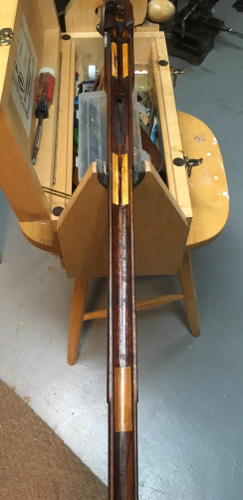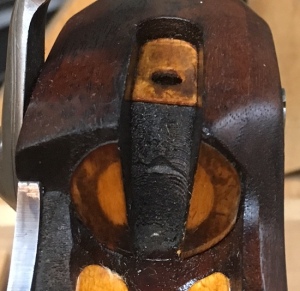If you have not read part one yet, you should start there.
Bedding the Military Target Rifle
So, after firing several hundred rounds, I thought I would remove the barrel from the stock and check on the bedding. Normally, you would not want to do that if the rifle is shooting well. In this case, I wanted to know if the bedding was correct and I thought it might benefit others to either see the bedding was okay, or to see how it was improper. It was fine.
Before we get to the pictures, let me say that I was certain the bedding was acting exactly as it should. The issues that I have been having with the rifle are all happening well beyond the muzzle. The 100 yard groups are consistent. I can fire thirty or more shots in a row and the point of impact does not change, the groups remain fairly round, and this does not change day to day. Even weeks after shooting, I can go to the range and my point of impact remains unchanged at 100 yards.
Any problems I am experiencing are not, I think, the rifle mechanically.

Full length view of Kerr stock.
You can see in the above photo the bedding points; tang, recoil face, breech, lower band, and middle band. Note that the middle band bedding is only craft paper. It took very little material to gain contact in that area. The top band has no bedding material, so it is not in the picture. Let’s look closer at the breech area.
Notice the ring impressed into the recoil face veneer. That is the barrel pushing back against the stock during recoil. The ring is even and balanced, showing the barrel is recoiling straight back into the stock. Much improved over the factory inletting. If you look closely at the lock plate, you can see the wear area at the top that first alerted me to the fact the barrel was not bedded properly.
It can be hard to see, but if you look at the tang veneer you can just make out where the end of the tang sits. Tightening the tang bolt, and recoil, has crushed the veneer slightly. I am still maintaining proper placement in the stock, so I am inclined to leave it alone at this point.
I may still alter the torque values of the barrel bands and tang bolt, but only if I can duplicate a problem with heat causing barrel shift.
Overall, I am happy with the results. The rifle behaves in a consistent manner as far as the inital launch of the bullet goes. I believe the barrel and stock are well bedded. My problems now lie in that mysterious void between the muzzle and the target.
The barrel has been greased and returned to the stock, where it will stay for several years unmolested, unless I decide to restock the rifle.



Pingback: Update July 30 2016 – Bits and Pieces | vring